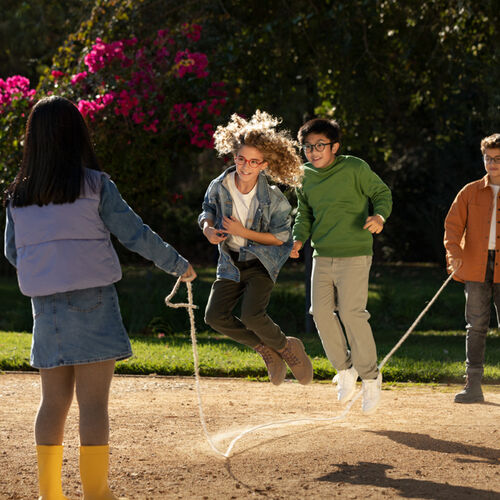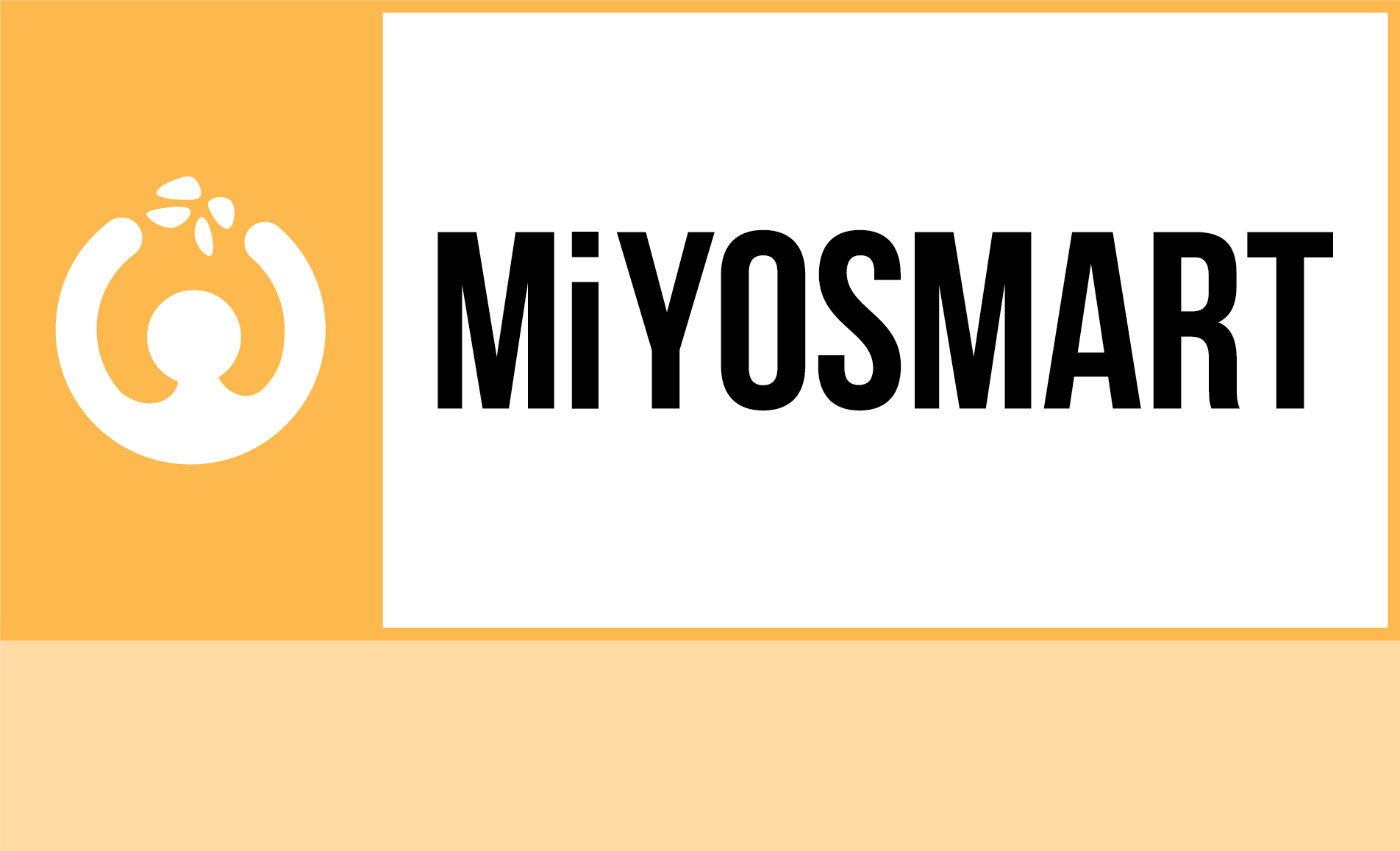MiYOSMART spectacle lenses are clinically proven to slow down myopia progression, with results sustained for over 8 years.¹.
Evidence you can trust

Spectacle lenses that really work, with long-term wear benefits
An 8-year follow-up clinical study demonstrated that the myopia control effect of MiYOSMART spectacle lenses was sustained in those children who wore them continuously for up to 8 years1, suggesting that long-term use provides continued benefits to improve myopia management outcomes.
No impact to your child’s lifestyle
MiYOSMART spectacle lenses will enable your child to spend active time outdoors. Neither the lenses, nor the treatment will have an impact on their favourite activities such as team sports with their friends.3
Overall, parents and children should not be concerned over the impact of MiYOSMART spectacle lenses on vision-related quality of life as wearing MiYOSMART is comparable to single vision spectacle lenses.4
Well tolerated with no long-term adverse effects
- MiYOSMART spectacle lenses are generally well tolerated among children5-11
- They are a non-invasive solution, unlike other treatments out there (like atropine or Ortho-K), and it usually only takes children a few days to adapt to their new MiYOSMART spectacle lenses
- No long-term safety concerns were identified over the 8 years follow-up period1

No 'bounce-back' effect
If your child stops their treatment with MiYOSMART spectacle lenses, myopia will not ‘bounce back’ to what it was before treatment.10 This is like other popular treatment methods, like high-dose atropine eye drops or orthokeratology.12, 13

Compatible with atropine eye drops
MiYOSMART spectacle lenses work in synergy with low-dose atropine eye drops. Recent clinical studies from Europe6 and China12 found that the combination treatment of MiYOSMART spectacle lenses and low-dose atropine eye drops was more effective, than MiYOSMART or atropine alone.
In fact, a study run in Spain shows that atropine eye drops may enhance the effect of MiYOSMART spectacle lenses on slowing myopia progression.13
However, this is a treatment decision that should be made under the supervision of an Eye Care Professional.

Suitable for most children
MiYOSMART spectacle lenses will enable your child to spend active time outdoors. Neither the lenses, nor the treatment will have an impact on their favourite activities such as team sports with their friends.14
Overall, parents and children should not be concerned over the impact of MiYOSMART spectacle lenses on vision-related quality of life as wearing MiYOSMART is comparable to single vision spectacle lenses.15


Clinical studies are the foundation of any evidence-based treatment.
That’s why MiYOSMART spectacle lenses come with extensive research to give you confidence that it’s the right choice for your kid.
MiYOSMART, the smart way to manage myopia in children
Disclaimers
MiYOSMART has not been approved for myopia management in all countries, including the U.S., and is not currently available for sale in all countries, including the U.S.
MiYOSMART spectacle lenses may not be able to address individuals’ conditions due to natural deficiencies, illness, pre-existing medical conditions and/or advanced age of consumers. The information contained herein is for general information and is not intended to constitute medical advice. Please consult your Eye Care Professional for more information prior to the use of MiYOSMART spectacle lenses.
References
- 1. Leung et al. Comparison of Myopia Progression in Individuals Wearing Defocus Incorporated Multiple Segments (DIMS) Spectacle Lenses for Eight Years versus Shorter Durations. Abstract presented at ARVO. Available at: https://www.hoyavision.com/globalassets/_regional-assets/global/arvo-2025/leung-et-al.-dims-8y-study-arvo-2025-abstract.pdf
- 2. Based on the number of publications in peer-reviewed publications according to HOYA’s data on file as of May 25.
- 3. Leung et al. Comparison of Myopia Progression in Individuals Wearing Defocus Incorporated Multiple Segments (DIMS) Spectacle Lenses for Eight Years versus Shorter Durations. Abstract presented at ARVO. Available at: https://www.hoyavision.com/globalassets/__regional-assets/global/arvo-2025/leung-et-al.-dims-8y-study-arvo-2025-abstract.pdf (Accessed September 2025)
- 4. Lu Y, Lin Z, Wen L, et al. The Adaptation and Acceptance of Defocus Incorporated Multiple Segment Lens for Chinese Children. Am J Ophthalmol. 2020;211:207-16. DOI: 10.1016/j.ajo.2019.12.002.
- 5. Lam CSY, Tang WC, Tse DY, et al. Defocus Incorporated Multiple Segments (DIMS) spectacle lenses slow myopia progression: a 2-year randomised clinical trial. Br J Ophthalmol. 2020;104(3):363-8. DOI: 10.1136/bjophthalmol-2018-313739.
- 6. McCullough S, Barr H, Fulton J, et al. 2-Year Multi-Site Observational Study of MiYOSMART myopia control spectacle lenses in UK children:1-year results (Abstract). Invest Ophthalmol Vis Sci. 2023;64(8):4945.
- 7. Nucci P, Lembo A, Schiavetti I, et al. A comparison of myopia control in European children and adolescents with defocus incorporated multiple segments (DIMS) spectacles, atropine, and combined DIMS/atropine. PLoS One. 2023;18(2):e0281816. DOI: 10.1371/journal.pone.0281816.
- 8. Saunders K.J. et al. Multi-Site Observational Study of Defocus Incorporated Multiple Segments (DIMS) spectacle lenses in UK children: 2-year results. EAOO 2025 Paper Presentation. https://www.hoyavision.com/visionary-knowlegde/conference-EAOO-2025/ [Accessed September 2025]
- 9. Troilo D, Smith EL, 3rd, Nickla DL, et al. IMI - Report on Experimental Models of Emmetropization and Myopia. Invest Ophthalmol Vis Sci. 2019;60(3):M31-M88. DOI: 10.1167/iovs.18-25967.
- 10. Nemeth J, Tapaszto B, Aclimandos WA, et al. Update and guidance on management of myopia. European Society of Ophthalmology in cooperation with International Myopia Institute. Eur J Ophthalmol. 2021;31(3):853-83. DOI: 10.1177/1120672121998960.
- 11. Lam CSY, Tang WC, Zhang HY, et al. Long-term myopia control effect and safety in children wearing DIMS spectacle lenses for 6 years. Sci Rep. 2023;13(1):5475. DOI: 10.1038/s41598-023-32700-7.
- 12. Kaymak H, Mattern AI, Graff B, et al. Safety of DIMS Spectacle Lenses and Atropine as Combination Therapy for Myopia Progression. Klin Monbl Augenheilkd. 2022;239(10):1197-205. DOI: 10.1055/a-1930-7116.
- 13. Guemes-Villahoz N, Talavero González P, Porras-Ángel P, et al Atropine and Spectacle lens Combination Treatment (ASPECT): 12-month results of a randomised controlled trial for myopia control using a combination of Defocus Incorporated Multiple Segments (DIMS) lenses and 0.025% atropine. Br J Ophthalmol. 2025; May 09:doi: 10.1136/bjo-2024-326852 (Epub ahead of print).
- 14. Fatimah M, Agarkar S, Narayanan A. Impact of defocus incorporated multiple segments (DIMS) spectacle lenses for myopia control on quality of life of the children: a qualitative study. BMJ Open Ophthalmol. 2024 Jul 2;9(1):e001562. doi: 10.1136/bmjophth-2023-001562. PMID: 38960416; PMCID: PMC11227816.
- 15. Li X, Ma W, Song Y, Yap M, Liu L. Comparison of Myopic Progression and Quality of Life Wearing Either DIMs Lenses or Single-Vision Myopia Correcting Spectacles. J Ophthalmol. 2025 Feb 12;2025:9959251. doi: 10.1155/joph/9959251. PMID: 39974171; PMCID: PMC11839264